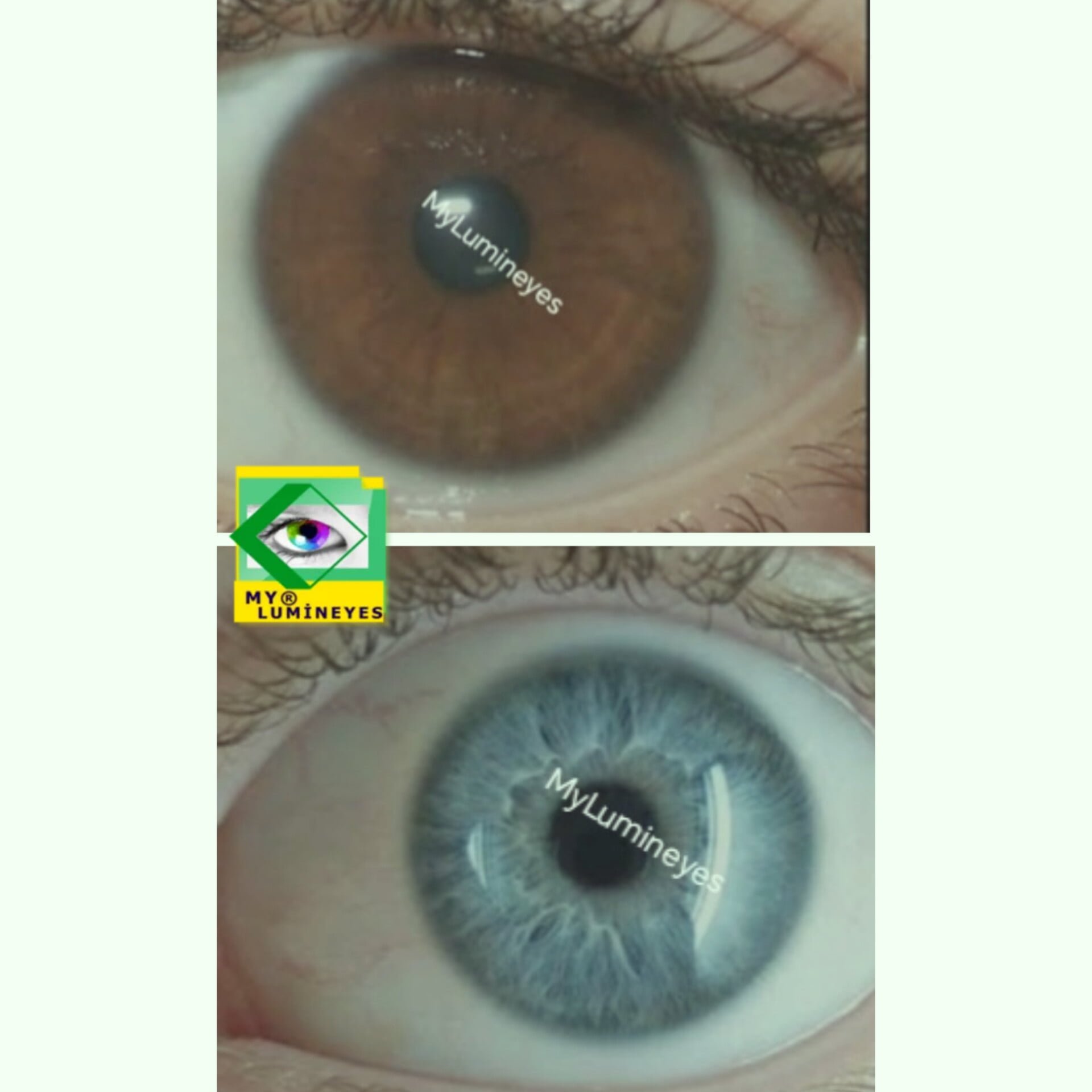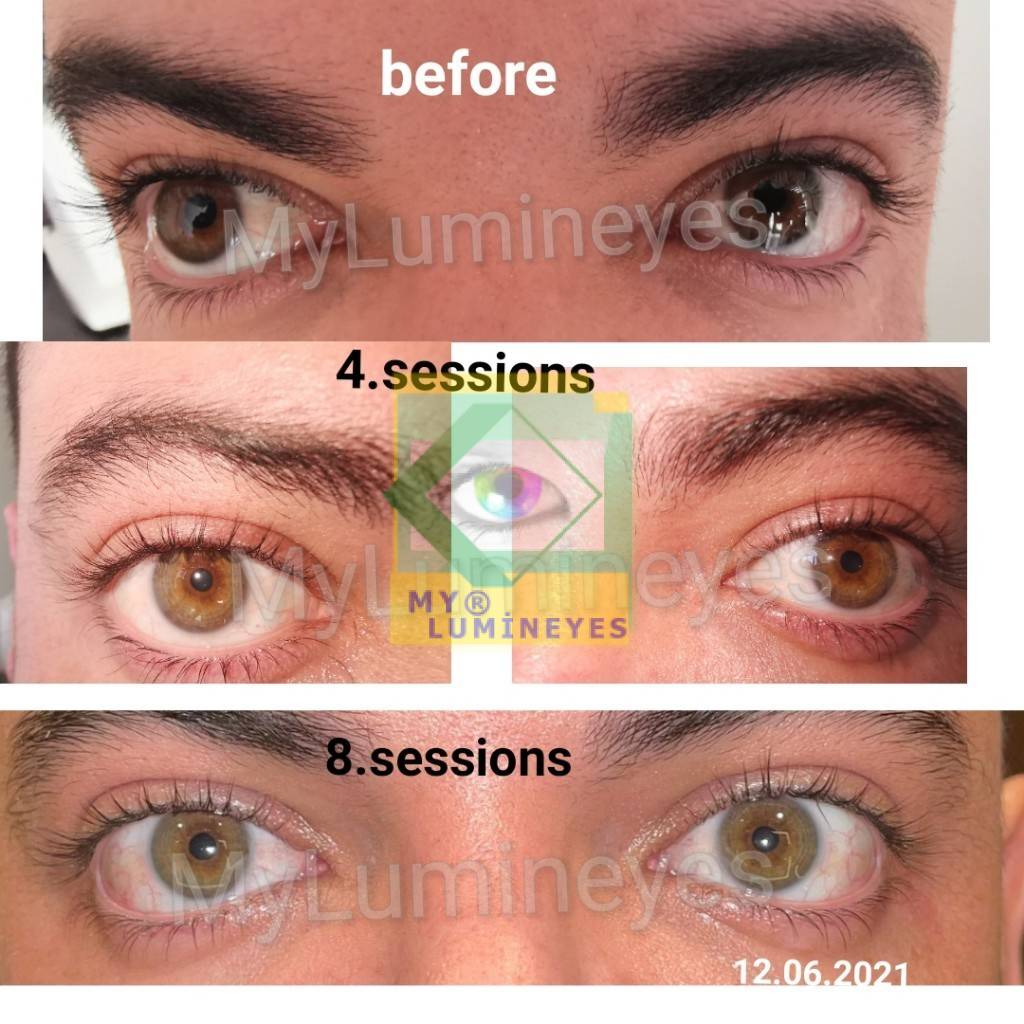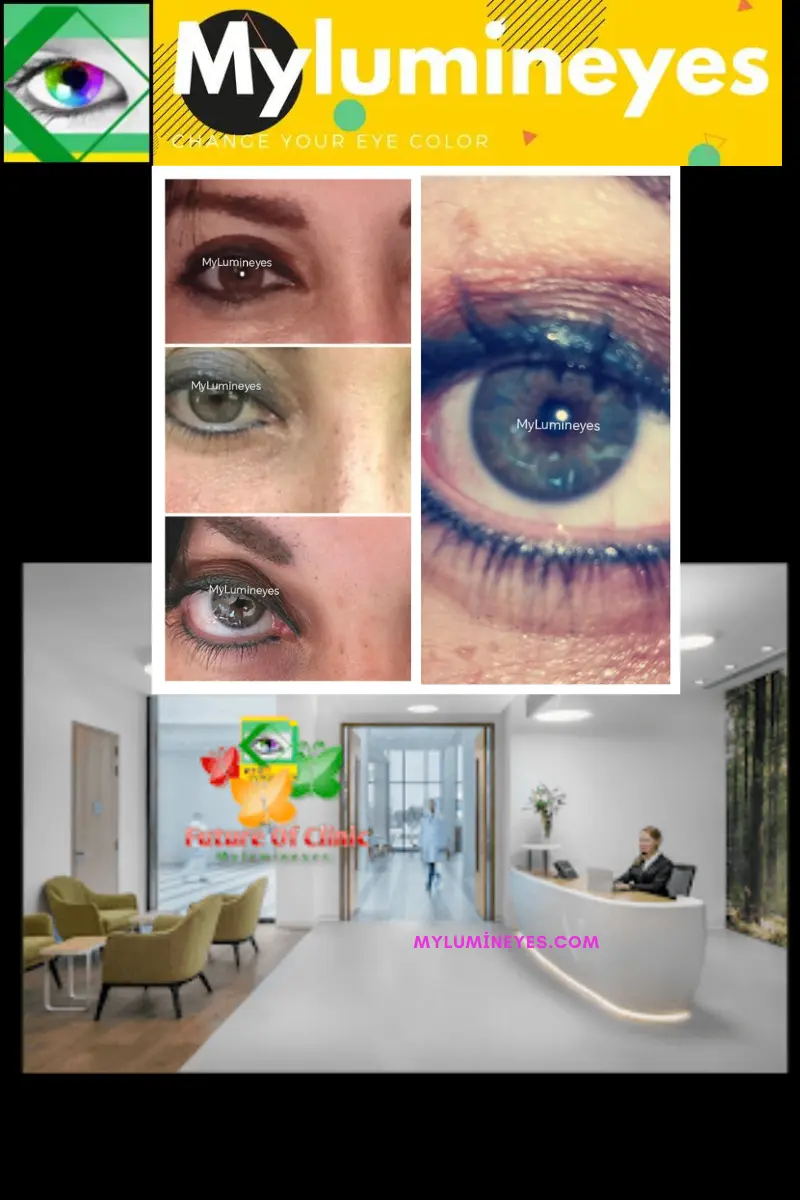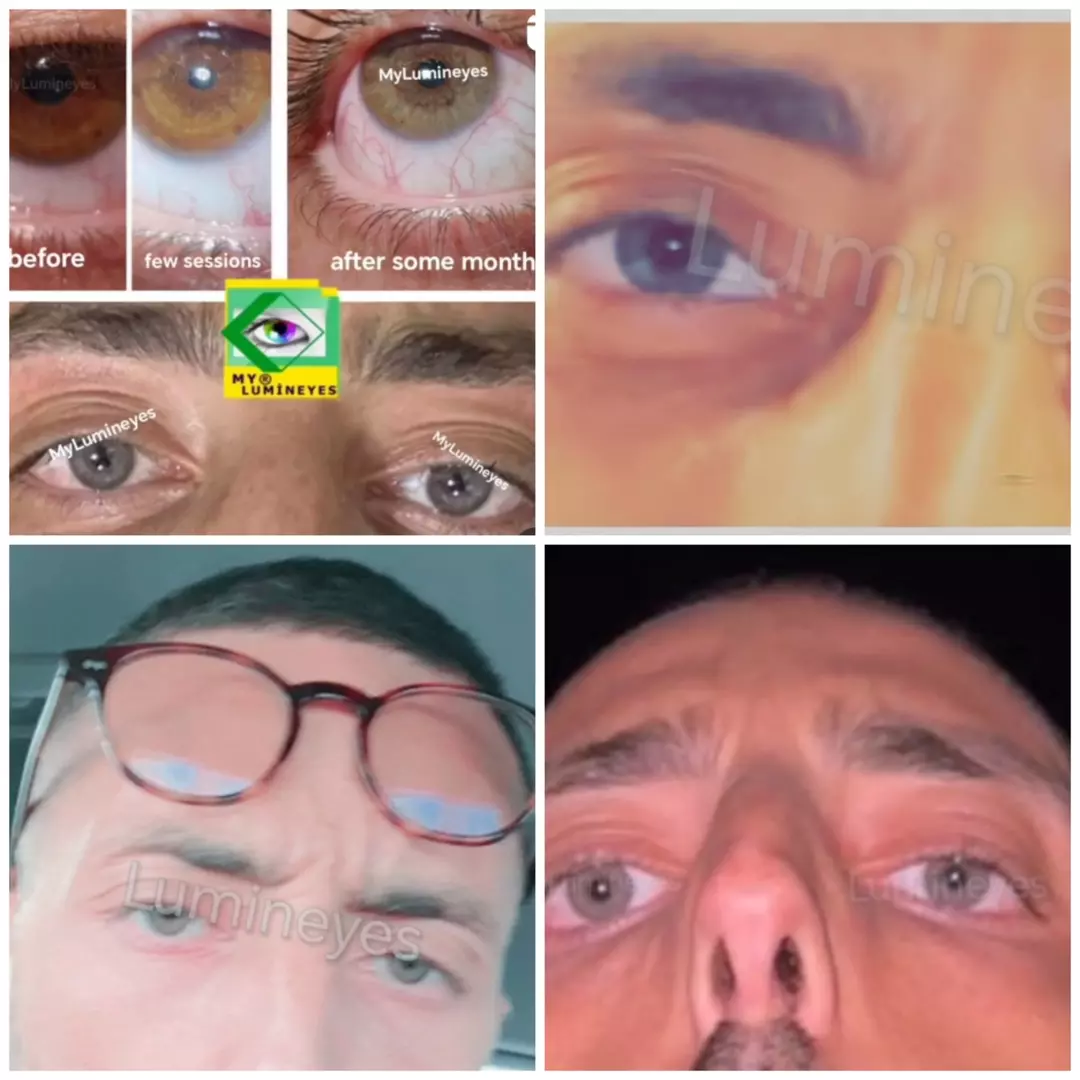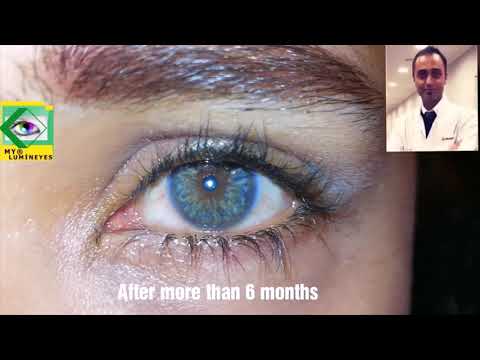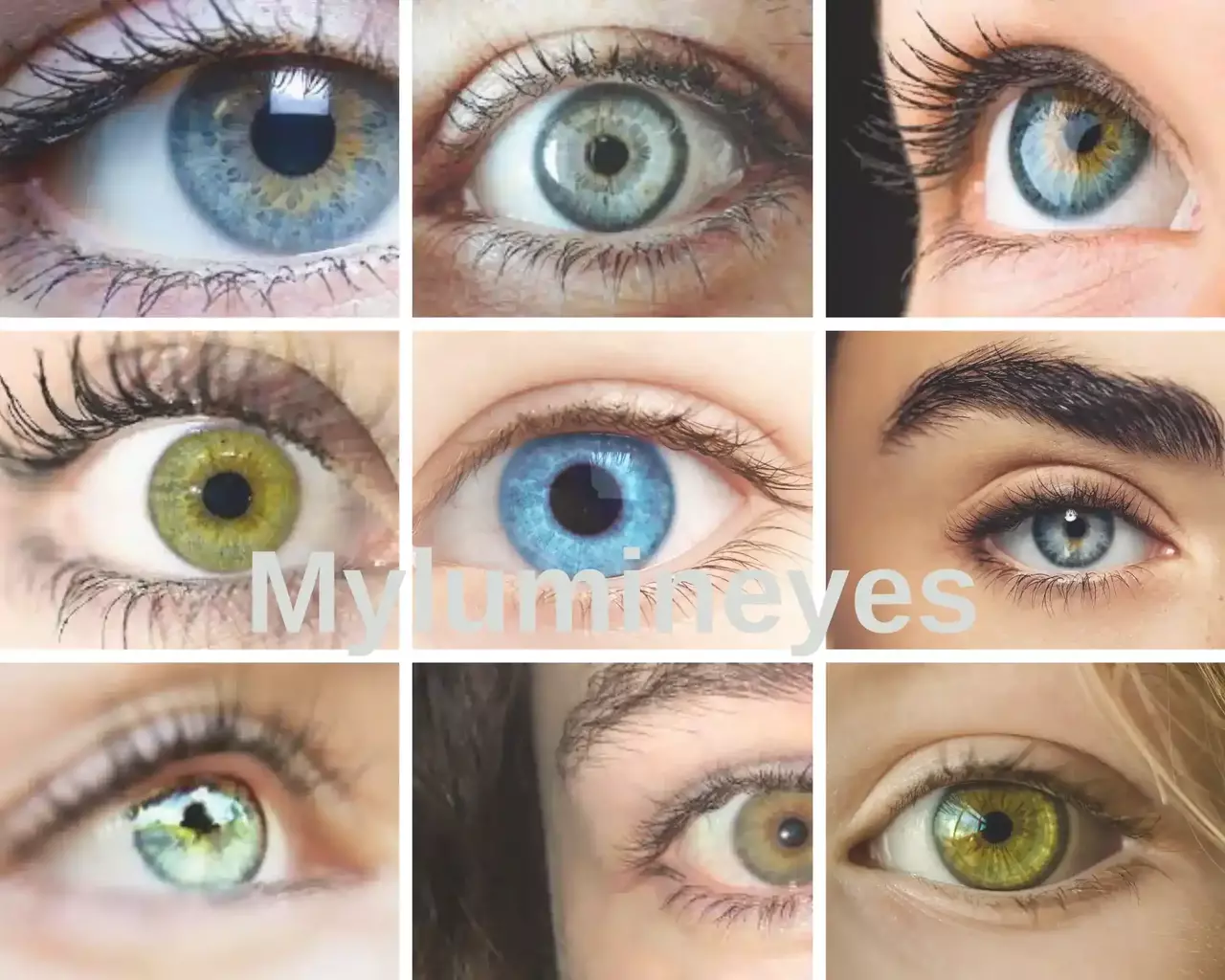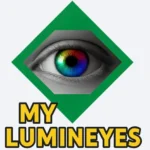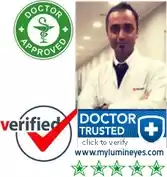Lasik Laser Eye Surgery Costs in Turkey
Laser eye surgery costs in Turkey are given for lasik, no-touch laser, PRK, and smile. The cost of Lasik eye surgery in Turkey varies depending on the procedure and the doctor’s experience. As a result, the price of lasik will be determined by the laser method utilized and the doctor’s abilities. Do you also know if the type of material used or whether the blade is zero or not affects the cost of lasik eye surgery? As a result, you should be wary of prices that appear to be too low for smile, no-touch, PRK, vision correction, and lasik procedures.In mylumineyes laser eye color change surgery clinic we use the highest technology and give the best laser eye surgery cost.
No-touch, PRK, LASIK, LASEK, and SMILE laser eye surgery
Those with myopia up to 10 degrees and those with hyperopia and astigmatism up to 6 degrees are suitable candidates for laser eye surgery. In higher numbers, intraocular lens implantation surgery (ICL eye surgery) should be preferred for both patient safety and visual success. No-touch laser is “transepithelial PRK.” So it is actually a PRK eye surgery method.
Excimer laser is a surgical procedure with very high efficiency and safety, but for laser eye surgery, the cornea must be of a certain thickness. Unlike LASIK and FLEX procedures performed with a femtosecond laser, the SMILE laser eye surgery technique is a new surgical procedure used in the treatment of myopia without creating flaps. After lasik, we also perform laser eye colour changes.
The “cost of Lasik eye surgery in Turkey” will vary depending on the method used and the doctor’s experience.
Accordingly, the cost of lasik will depend on the type of laser method used and the skills of the eye doctor.
Accordingly, the cost of lasik will depend on the type of laser method used and the skills of the eye doctor. Moreover, do you know whether the material used or whether the blade is zero or not also causes a different lasik eye surgery cost? That’s why unnecessarily low Smile, No Touch, PRK, Vision Correction, and Lasik costs are a scam for you.
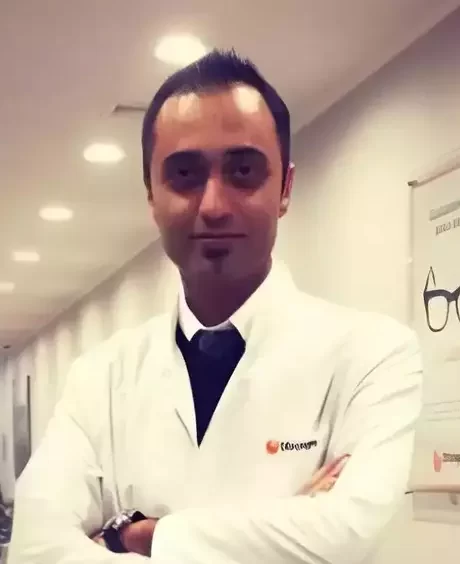
Eye surgery with Lasik Lamellar surgery is also known as flap surgery.
After numbing the eyes with eye drops, the process begins. A flap with a diameter of 8.5–9.5 mm and a thickness of 90–160 microns is removed. After the flap is removed, the stromal layer is treated with an excimer laser. The flap is then repositioned. Comfort is better in lasik surgery compared to PRK because there is no excised epithelium as in PRK treatment. Accordingly, early image recovery is provided. Today, refractive surgery is the most preferred surgical procedure. Spherical astigmatism up to 5 D–10 D and astigmatism up to 5 D can be treated. It is classified into two types based on the lifting type of the flap:
a) Traditional LASIK: The flap is made with a keratome, and excimer laser ablation is then done.
b) Femto-LASIK (knifeless laser): An excimer laser ablation follows the creation of the flap using a femtosecond laser.
For “Lasik eye surgery cost in Turkey,” we provide best options to our patients.
iLASIK (laser without a special blade)
Treatment is done with the benefit of the individual corneal map (wavescan system), which is called the wavefront map of the person, and it is applied in the treatment. This treatment combines femtosecond laser technology with personalized treatment (Advanced CustomVue TM). It is a preferred technique for avoiding scattering and ghosting around the light after the laser, particularly in patients with night vision problems or large pupils. NASA and the American Army have approved astronauts and air force pilots to receive ILASIK treatments.
This approval shows that the ILASIK eye surgery works well even for people like astronauts and pilots who need very strong and specialized vision and work in very harsh environments.
In laser treatment, it is very important for the device to shoot at the planned point of the eye. This means that there must be a digital eye-tracker between the device and the eye. This technology, unlike the eye-tracking systems we know, follows its movement around its axis. The cost of ilasik laser eye surgery is more expensive in Turkey than normal LASIK surgery.
PRK stands for photorefractive keratektomi.
The cornea is scraped with an epidermal knife and applied to the stroma layer of the eximer laser cornea. Protect from infection and pain by wearing contact lenses for 3–4 days until the epithelium is renewed again. It is advantageous that the flap is not removed, and the risk of ectasia is low. Until the epithelium is updated, the most common complaints are pain, stinging, and watering up.
Also, the length of the healing period is long, the blur is called a “haze,” and the regression, which means that some or all of the numbers are returned when high numbers are applied, are other unwanted situations. Usually, myopia up to 5, hypermetropia up to +3, and astigmatism up to 3 are applied.
No-Touch PRK (Trans-PRK)
It is generally the same as the PRK technique. The laser beam is used instead of the blade to remove the facial corneal epithelium. The difference between PRK and the disadvantage of the device is that the thickness of the device is 50 microns. However, since epithelium thickness differs from person to person, there may be incomplete or excessive epithelial scraping. On the other hand, the results were found to be the same as PRK.
Lazer epithelial keratomilieusis (LASEK)
It is similar to the PRK. The epithelium is removed using 18–20% alcohol for 15–30 seconds, and the epithelium is covered after eximer laser ablation.
Epithelial laser-assisted in-situ keratomileusis (Epi-LASIK)
similar to PRK. The epithelium is removed by mechanical microkeratome, and the epithelium is covered after eximer laser ablation.
Lenticular extraction (SMILE)
With femtosecond laser technology, a thin lenticule (disc-shaped tissue) is created in the cornea of one eye. The surgeon benefits from the newly created lenticule through a 3.8-inch opening in the cornea. It is an advanced laser technology technique that allows the treatment of myopia and astigmatism up to myopia minus 10 and astigmatism minus 5. There is no need to cut any flaps.
Correcting the loss of cornea in the eye by changing the shape of the resulting cornea to benefit the lenticule created in the eye Corneal biomechanics are less affected than those of other laser surgeries because no flap is created.
The most powerful corneal biomechanics after laser surgery are obtained after the SMILE procedure. It is the most appropriate treatment technique for athletes and occupational groups who are at risk of exposure to the pulse and the press. Zeiss’ Visumax femtosecond laser system can be used to perform the SMILE treatment technique.
Lasik Eye Surgery Cost in Turkey: I-LASIK-Vision Correction
Lasik eye surgery is a laser method for the correction of vision levels. IntraLase Lasik: The excimer laser is used to eliminate visual defects such as myopia, hyperopia, and astigmatism. In short, this operation uses IntraLase femtosecond laser technology and a personalized Excimer laser. Turkey is very advantageous in terms of the cost of lasik.
Why is eye surgery in Turkey cheaper than in the US? The answer is simple: eye surgeons in Turkey have tremendous surgical experience and can perform many operations in a short time. Lasik, or vision correction laser eye surgery costs are therefore low in Turkey. Surely, the world’s most experienced ophthalmologists, the most magnificent city, and low-cost lasik eye surgery in Turkey will attract you.
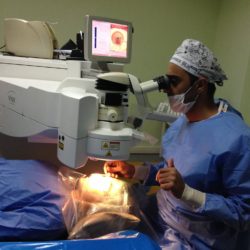
Lasik Laser eye surgery in Turkey is not only safe but also cost-effective.
In lasik eye surgery, the flap is created with a femtosecond laser beam using IntraLase technology, and no blade is used. Ilasik treatments are among the most advanced laser technologies available in today’s medicine. With bladeless laser applications, these operations, which are individually applied and have a short-term recovery phase, are effective treatment methods for vision disorders and refractive errors. It’s a type of treatment that combines the creation of a corneal flap with the application of wavefront treatment.
The features of the patient define every application stage in lasik eye surgery therapies.This aspect helps therapeutic therapies to have rather high success rates. Using apps for medication, which are among the FDA-approved therapies, people with visual disabilities who wish to be candidates for key occupational groups, including as pilots, can acquire competency approval.
What is laser conformity testing, and how does it work?
In brief, here’s how to perform a laser compliance test.
Pre-laser preparation tests are used before treating refractive errors like myopia, hyperopia, and astigmatism. Many parts of your eyes are inspected. The most effective laser method has been selected for you. The refractive errors are controlled to see if they are suitable for laser eye correction. At affordable costs, PRK, Lasik, iLasik, Smile, and Waterfront laser eye surgeries are successfully used in our center.
How is Lasik eye surgery performed?
- The patient cannot get anesthesia during the LASIK procedure. Because:
- To direct the laser beam to the eye’s visual axis, the patient must look at the laser device.
- For this reason, we use drops to anesthetize the patient’s eyes. As a result, the patient does not experience any pain or suffering during the procedure.
- Sending the person home doesn’t require hospital admission or bandaging their eyes.
- Your eyes may water and sting for 4-5 hours after the treatment. These symptoms disappear over time, and the vision begins to clear.
- On the first night, he shouldn’t touch his eyes while he sleeps. This is important for putting the removed flap in the right place.
- The patient’s happiest moment is when they wake up the next day without glasses and can see the world around them. The patient can then return to his normal routine.
Why Should You Use a Bladeless Laser?
- Because a computer, not a knife, creates the flap, it is more reliable.
- It is suitable for patients with thin corneas.
- allows for correction of astigmatism.
- Bladeless lasers reduce the likelihood of complications.
- It is pleasing to the eye.
- You can use it on both eyes simultaneously.
- Patients who get better quickly and don’t need to stay in the hospital can go back to their normal lives in 24 hours.
- In Turkey, the cost of Lasik laser eye surgery is affordable.
Refractive surgery is the general name of the techniques used to treat myopia, hypermetropia, and astigmatism in people who do not want to use glasses or lenses.
It is also known as “eye relief surgery” or “eye scrubbing” among the public. Most refractive surgical techniques coat the corneal layer with a laser. This treatment is unreasonable, especially for very large numbers of people with special artificial lenses in their eyes, because it reduces the frequency of knife operations used in refractive surgery.
Who is a candidate for Lasik eye surgery?
- Those who are unable to use or only use glasses or lenses that are over 18 years old are eligible.
- In the last year, the eye grade of 0.50 diopter has remained constant.
- I have myopia up to 10 diopters, astigmatism up to 5 diopters, and hyperopia up to 5 diopters.
- For those who do not have corneal texture,
- Without systemic diseases like diabetes and rheumatism,
- Those without corneal tortuosity, such as keratoconus, eye pressure, etc., have normal vision.
Treatment with Lasik Eye Surgery How does the process work?
Stage 1 (Examinations):
Candidates for refractive surgery should have a detailed eye examination. The detailed examination includes measures of eye grades, corneal thickness, eye pupil diameter, biomicroscopy examination, eye tension, and retinal layer. Corneal topography, a fundamental examination in refractive surgery, also serves as a basis for other examinations such as wavefront and corneal hysteresis when required.
We thoroughly question the presence of systemic diseases like diabetes, goiter, and high blood pressure. Before the examination, if the patient is wearing contact lenses, they should wear them for an average of one week; otherwise, errors in the eye examination and measurements may occur.
The argon laser technique protects the retina’s risky areas, such as thinning, tears, or holes.
The argon laser treatment may necessitate a three-week delay in excimer laser therapy. After the safety process with an argon laser, safer lasers can be made. We cannot perform the laser treatment immediately, as the pupil expands due to a drip inspection and requires some time to stabilize.
Stage 2 (treatment):
The LASIK eye surgery treatment is a swift and patient-friendly procedure, so there is no need to worry about surgery or tension. Eye drops are used as anesthesia. There is no harm in eating on the day of the patient’s treatment. The ladies should not have eye makeup on that day. We ask the patient to lie down on the back of the special laser bed when he enters the laser chamber. To prevent the eyes from breaking during the treatment, a special and reliable apparatus places a sterile covering over the eyes and opens the eyelids.
Each eye undergoes the laser treatment for 4–5 minutes without experiencing any pain. It is critical for the patient to be comfortable during treatment and to follow his or her physician’s instructions. After the treatment is complete, the patient exits the laser chamber untethered.
Stage 3 (post-treatment care):
The patient who has completed the laser treatment is kept for some time, depending on the type of treatment, and is either taken to the control examination or sent home after the operation. On the first day, blurred vision and 3–4 hours of itchy eyes, burning, and watering are normal. You can take a painkiller if you experience a headache after the laser. On the day of surgery, avoid using the car and avoid taking any medications. Avoid rubbing your hands, including handwashing, face washing, and bathing, for the first 24 hours.
In the first few days, you should be careful not to run away with eyebrow soap and shampoo. The day after the operation, there will not be any side effects that would limit social or business life. If the doctor detects a wrinkle in the transparent area of the eye surface the next day during LASIK eye surgery, or if there is a reaction under the flap (valve), it may be necessary to wash the bottom of the flap.
However, this procedure is simpler in application than the operative one. The day following PRK-like surgery, the surgeon removes the contact lens. We use antibiotic and steroid drops for the first month after surgery, followed by artificial tears for 3–6 months.
Complications of LASIK Eye Surgery Therapy
Dry eye
Dry eye syndrome typically arises following refractive surgery and persists for 3-6 months postoperatively. Research shows that the production of tears drops to its pre-laser level in the first six months, causing a temporary lack of tears and dry eyes. During this time, people who are laser-operated must wear sunglasses and artificial tears. Most commonly, this occurs after LASIK.
Infection
Flap complications:
These complications are specific to LASIK. Flap tears, decentralized flaps, cell migration under flaps, flap wrinkles, and so on are examples.
Haze (corneal turbidity).
In the second or third month following PRK, the laser becomes blurry. After PRK, high myopia undergoes deep treatment. Steroidal drops reduce the mitomycin C haze during laser use.
Hyperopia at -10.00 D and myopia above +6.00 D exhibit incomplete or overtreatment.
Corneal ectasia:
Irregular astigmatism and blurring of vision occur when the cornea begins to thin. The most important risk factor for corneal ectasia is abnormal corneal topography findings.
Inconsistency between the size of the eye doll and the treatment zone arises.
Regression:
Following treatment, some or all of the eye grades return.
Are excimer lasers and Lumineye lasers the same?
No, the excimer laser uses different wavelengths to treat refractive errors in the eye. The “My Lumineyes Laser” uses a unique wavelength and unique technology to change eye color.

Can an excimer laser lasik change the color of your eyes?
It is not possible; after Lasik, your eye color does not change. In order for your eye color to change, there must be a change in the iris melanin layer. We use a Lumineyes 8G laser in this process. Thus, by reducing the melanin pigments, your eye color will lighten, leading to the emergence of colored eyes. In the Lasik method, while the target area is the cornea, the target area for laser eye color change is the iris.
Refractive surgery with an excimer laser is known as “eye-drawing surgery.”
People between the ages of 18 and 60 who do not have a chronic eye disease and have myopia up to 12 degrees, astigmatism up to 6 degrees, and hyperopia up to 6 degrees can use the excimer laser. Excimer laser takes about 15 minutes. Can the excimer laser reset the eye number? PRK and iLASIK eye surgery methods typically reset the eye number.
However, if the eye number is excessively high and the corneal thickness is insufficient, it may be necessary to make a small adjustment. Regression occurs when numbers 1–1.5, especially those with numbers above 6 or 7, return to some extent within an average of 5 years after laser treatment. These returned values can be useful because they eliminate the need for myopic patients to wear close-up glasses.
Is the eye color change procedure after lasik surgery safe?
Most of our patients are absolutely healthy and have had previous lasik surgery. Before or after lasik, you can have laser eye color change surgery without any problems. If you wish, we can even do both eye color change surgery and lasik surgery for you at intervals. It is worth noting that, as we have told you before, MYLUMINEYES is a safer laser method than LASIK.
PRK no-touch laser
The No Touch treatment does not involve making any incisions on the eye, whether short or long, using a knife or a laser. The treatment does not apply a vacuum to the eye. We do not remove a disc-shaped tissue piece from the eye. We use a laser to treat the eye without touching it or contacting it with any device. The term “no touch” laser does not have the same scientific nomenclature as PRK, LASIK, or SMILE. “Transepithelial PRK” is the scientific name for the no-touch laser. As a result, it is actually a PRK eye surgery method.
The TransPrk No Touch laser does not cut the cornea, thereby eliminating this risk.
Even good visual acuity, which remains stable for many years without the risk of ectasia, carries itself to a higher point than all other methods. We understand that the No Touch laser is extremely safe. We have proven the safety and effectiveness of PRK eye surgery. Similar to LASIK, the PRK method uses an excimer laser to reshape the cornea.
The LASIK technique applies the laser to the deep layers of the cornea under the flap, whereas PRK eye surgery applies the laser to the surface. It is the only laser method for treating refractive errors that treats the cornea without touching it. It is the first choice, particularly when dealing with thin and irregular corneas. The removal of the corneal flap (valve) prevents flap-related complications or problems.
No-touch laser provides a permanent treatment for myopia, hyperopia, and astigmatism.
After the procedure, there is no need to use glasses or contact lenses again. The no-touch laser technique avoids making an incision on the eye. As a result, tissue loss during laser correction is very low compared to other techniques. Who is the target audience for No Touch Laser?
Patients with myopia, hyperopia, and astigmatism can apply this method after a detailed physician examination if their eye structure is suitable. We recommend no-touch laser treatment, particularly for individuals with a thin corneal structure or a steep corneal level. Patients with thin corneas, in particular, prefer the no-touch laser due to its superior protection of the corneal biomechanics.
After a thorough examination, the doctor can apply no-touch laser treatment to patients whose eye structures are suitable for surgery. There is no medical procedure that comes without risk. Like any operation, the PRK laser has risks. Infection may occur after the operation. Permanent scars, also known as non-transparent areas, may appear in the cornea.
Lasik laser surgery.
Patients who use glasses or contact lenses due to eye disorders undergo Lasik surgery, also known as refractive surgery, to provide clear vision without glasses. LASIK is a surgery to correct eye deformities using laser beams. ILasik is a type of eye laser surgery that permanently treats various refractive errors. It is widely used for the treatment of vision defects such as astigmatism, hyperopia, and myopia in suitable patients, apart from glasses and contact lenses.
We lift a valve in the corneal tissue after anesthetizing the eyes with drops. Excimer laser beams correct a visual defect by targeting the tissue under the valve. During the operation, which takes about 4-5 minutes for one eye, the patient does not feel pain and returns to his daily life the next day.
Is LASIK a safe technique?
The US Department of Health (FDA) has long approved LASIK surgery, a procedure renowned for its harshness and deemed highly safe by all health authorities. A recent 100-peer review failed to show any significant differences in safety or accuracy of results between SMILE and LASIK. Other studies have shown that SMILE can be more accurate than LASIK. Dry eye is the most common problem after LASIK, and almost all patients experience it during the first 3–6 months after the procedure.
Lasek laser procedure
The laser treatment LASEK corrects a vision defect. LASEK differs from LASIK in that it does not create a flap in the cornea. The LASEK procedure involves applying alcohol to the cornea. In other words, the LASEK method creates a flap. We manually create the Lasek flap by applying alcohol to the corneal surface epithelium. The excimer laser reshapes the cornea, and following laser treatment, we spread the flap, place a contact lens on it, and allow it to heal.
Smile laser eye surgery
A femtosecond laser creates a small, lens-shaped incision in the cornea (lenticule) during smile laser eye surgery. An arc-shaped small cut removes the lens, alters the cornea’s shape, and enhances vision clarity.
The FDA has approved the SMILE laser surgery, which uses the patented VisuMax femtosecond laser. Unlike LASIK and FLEX procedures, which use a femtosecond laser, the SMILE laser technique is a new surgical procedure that treats myopia without creating flaps.
In order to have Smile laser eye surgery, the person must be over the age of 18, and the eye number must not have changed in the last year.
Similarly, individuals with myopia degrees between -1.00 and -10.00 degrees, as well as those with astigmatism degrees, are eligible for Smile laser eye surgery. Smile-eye laser surgery is only available to people under the age of 50. After the SMILE laser, the patient complains of mild burning for about 1 hour. The next day, the person can return to his daily life, including swimming in the pool and doing active sports. It may take a few days for the vision to clear.
Keratoconus, herpes in the eye, and retinal rupture occur in many patients who do not have laser eye surgery, resulting in vision loss. Today, the most common problems with eye surgery have nothing to do with vision loss. Instead, dry eyes and the eye’s ability to adapt often cause these problems.
What is ICL (lens implantation eye surgery)?
Young patients whose eyes are not suitable for laser surgery due to high refractive errors such as hyperopia, myopia, and astigmatism, or due to a thin corneal structure, undergo Phakic intraocular lens surgery (ICL). ICL eye surgery treatment successfully corrects -3.00 to -18.00 diopters of myopia, 6 diopters of astigmatism, and 10 diopters of hyperopia.
The patient does not have a cataract in this operation; his natural lens is transparent and continues to function after the surgery.
The procedure involves placing the intraocular lens in front of the clear lens, just behind the iris layer. A small corneal incision gently inserts the ICL implant into the eye.
The excellent flexibility of the lens enables the insertion of a much smaller surgical incision into the eye, resulting in faster healing. Phakic intraocular lens surgery involves inserting a lens, akin to a contact lens, into the eye. Surgery is performed with drip anesthesia. Shortly after this operation, which takes about 10 minutes, the patients continue their daily lives.
Smart lenses
Smart lenses show the intermediate distance in both far and near humidity, eliminating the patient’s need for glasses. As they get older, their lens adaptability decreases, and they have difficulty seeing up close. The smart lens application, which has achieved successful results, especially in cataract treatment, saves patients from both cataracts and nearsightedness. Smart lens therapy is also known as “smart lens therapy.”
Despite being the world’s gold standard for eliminating glasses, not every patient can benefit from laser treatment. There may be various reasons for this. Among the most common reasons we encounter, the eye defect is too high, and the corneal tissue to which we will apply the laser is thin or weak.
Advantages of ICL Treatment
- It does not cause night vision complaints.
- You can apply it to thin corneas.
- It allows us to correct all kinds of visual defects in keratoconus patients.
- The addition of a new element to the eye’s optical system has greatly improved vision quality. Much
- Many of our patients have better vision and contrast sensitivity than they would have with glasses or contact lenses.
- The most important advantage of ICL eye surgery treatment is that it is reversible. If an issue arises, we can remove the lens.
- Unlike excimer laser treatments, it does not cause eye dryness.
- contains UV protection.
The costs associated with eye surgery and laser treatment are significant.
Cataract Surgeries:
*Phacoemulsification with monofocal intraocular lenses: 950 (one eye)
*Phacoemulsification with bifocal intraocular lenses: 2000 (one eye)
*Phacoemulsification with trifocal intraocular lenses: 2500 (one eye)
Bilateral trifocal: 3500 euros; bilateral bifocal: 3500 euros
All lenses are the best. 1. the quality of Alcon or Amo-American lenses; we do not use 2. quality lenses or equipment.
Refractive Surgery: Lasik-Laser Eye Surgery Cost
*PRK (photorefractive keratectomy) with mytomycin C: 950
*No-Touch Laser: 950 Euro
*The cost of Lasik laser eye surgery for keratomileusis is 950.
*iLasik-Femtosecond-Lasik 1100
*Lasik laser surgery cost XTRA: 2500
*Near Presbyopia Support: 1500 for near-far vision correction.
*Phacic IOL Implantation: 2300
*Toric ICL implantation costs $2300.
*Corneal transplantation is a $4500 procedure.
*Topo-laser for keratoconus: 2500
*Keraflex for keratoconus: 3000
*Smile laser:2200
Eyelid Surgeries:
*Blepharoplasty refers to cosmetic eyelid surgery.
a) Upper limit: 900
b) Lower Lid: 1250
c) combine(upper+lower):2100
Ptosis Surgery: 2300
Retina Surgery and Treatments
*PPV (pars plana vitrectomy) surgeries: 2500
*Anti-VEGF injections for macular degeneration: 700
*Total diabetic retinopathy treatment (lasers + intravitreal injection + tests + angiograhy): 1000
Glaucoma treatments and surgeries:
*Glaukos i-Stent surgery: $4000
*Trabeculectomy (Glaucoma Filtration Surgery): 2000
*SLT (selective laser trabeculoplasty): 700 “Glaucoma laser eye surgery cost”
Strabismus surgery
*Strabismus surgeries: 900–1600
DCR Dacryocystorhinostomy (Tear Duct Blockage Treatment): 1100
Please feel free to inquire about laser eye color change surgery using luminescents.
**General anesthesia (consultation with an anesthesiologist, internal medicine physician, blood test, EKG, radiology, and so on); a single bed for one night; and radiology = 780 euros.
Op. Dr. Mustafa Mete.

